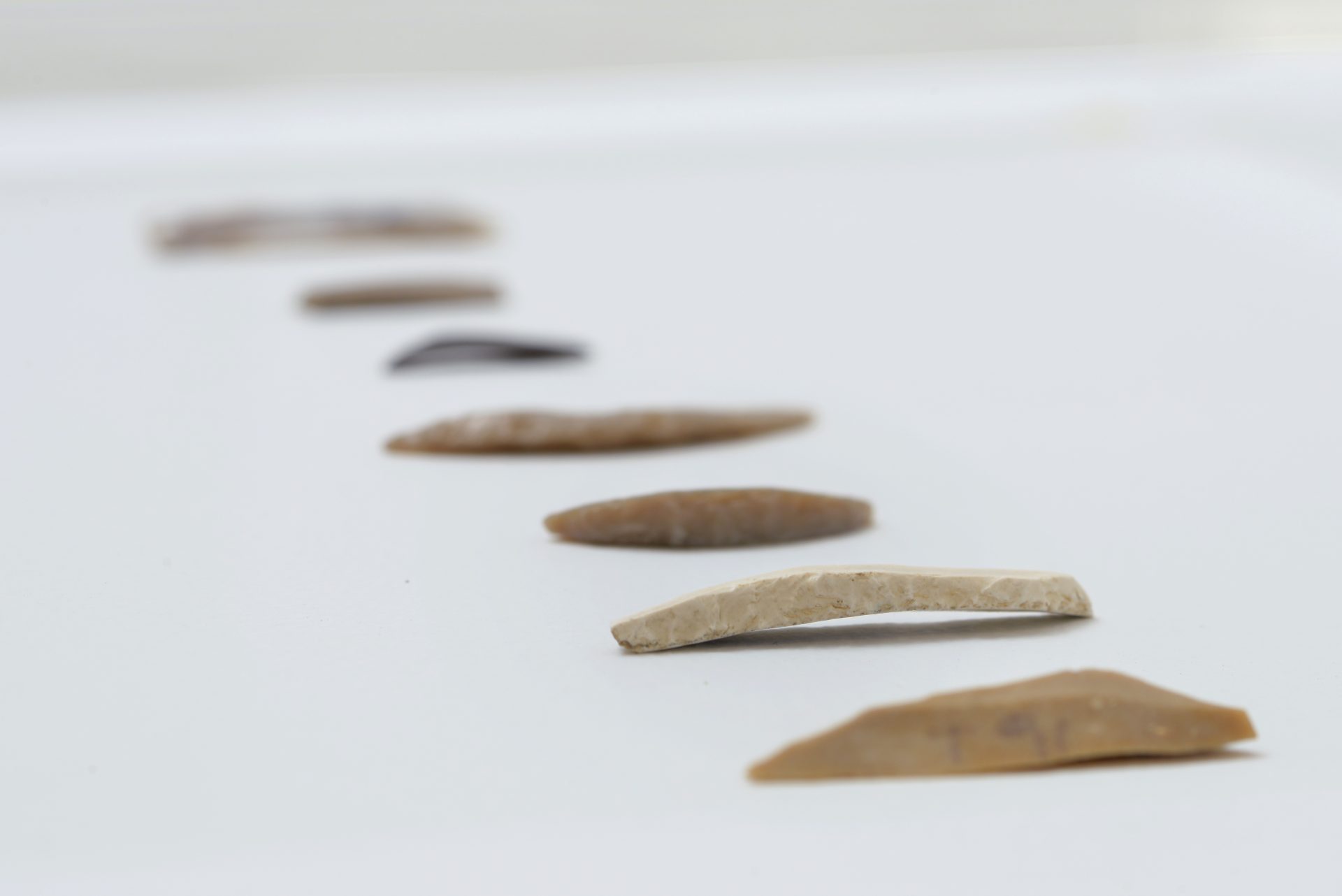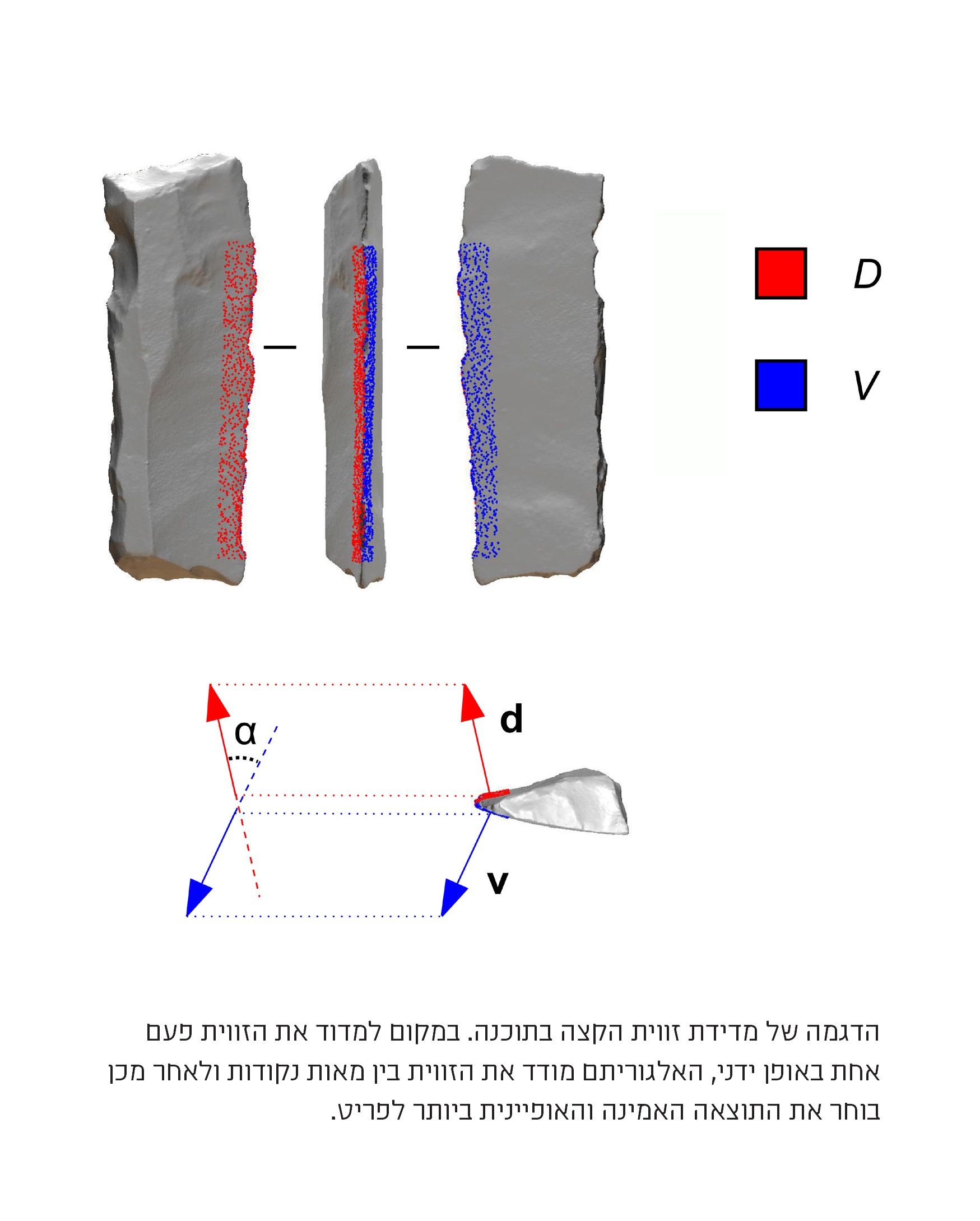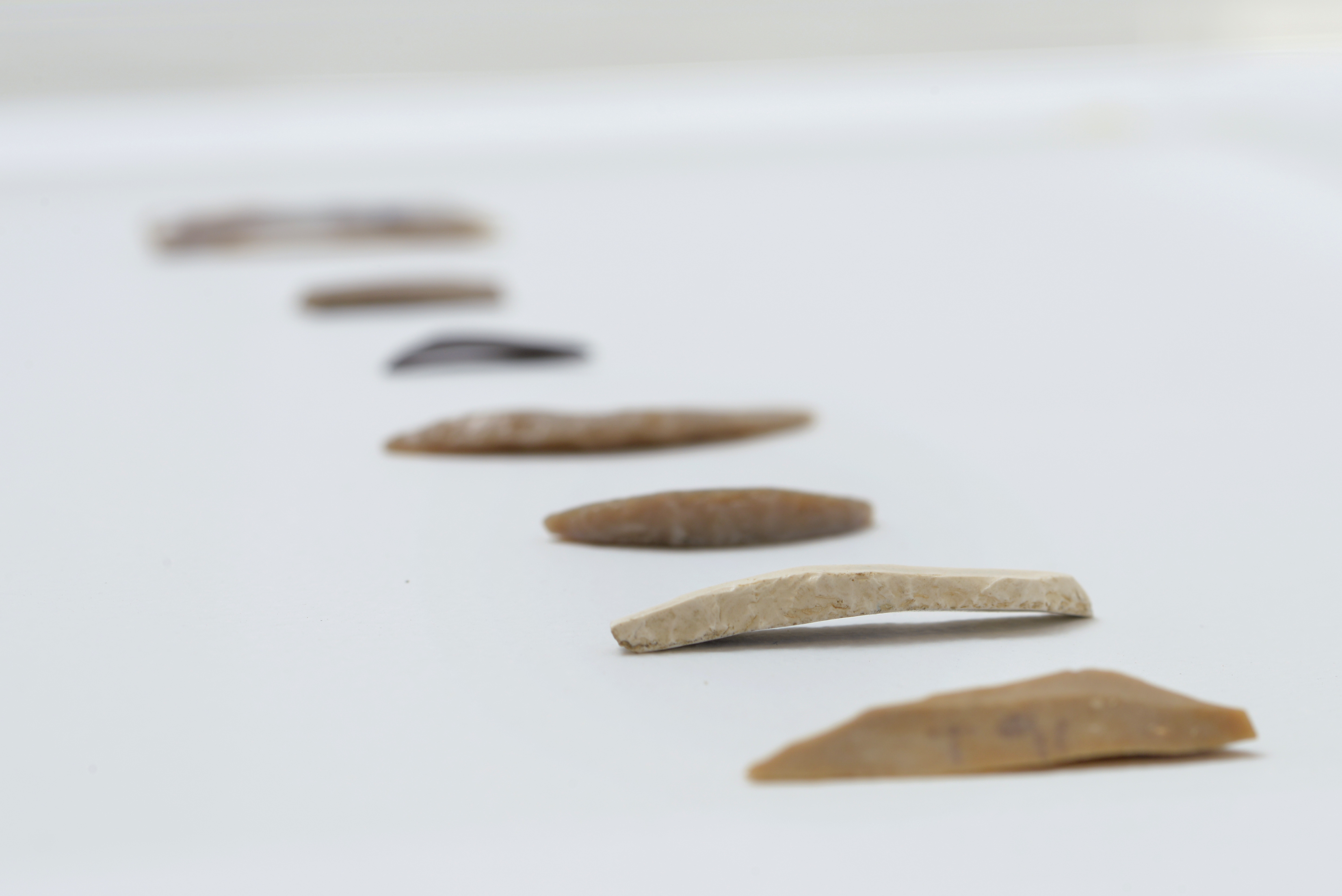There are motor activities that are inherent from the moment we learn them, such as walking, holding a fork or writing. The manner in which we execute these movements can reveal in which society we grew up. In Prehistoric cultures where chiseling flint blades was a daily craft, the manner in which the stone was chiseled is one of these activities. This habit can be researched focusing on the signature: the sharpness of the flint tools.
In this research, the angel of the sharp edge of the tiny flint tools compared groups of hunters- gatherers that lived in the land of Israel in the Epipaleolithic Age (11,500 – 20,000 years ago). These groups belonged to cultures different from those that roamed the country and lived side by side. Characterising the tools of the different groups shows the complex dynamic of the nomads that learnt the trade from their fathers and those that learnt from the locals of a specific geographical area.
The research is based on 3D scanning of the artifacts and objective measurement of the angle of the sharp edge. The program that was developed in the laboratory analyses the scanned artifact and measures the area of the edge of the blade and at the end presents the characteristic angle. Between the groups of hunters-gatherers that we researched, the members of each groups made tools that had the same sharpness even if they lived in different areas. HOwever, in some cases the local tradition of a particular area had an effect on the sharpness of the tools. From the results it appears that the social dynamic in the land of Israel in the years preceding the beginning of the agricultural age was complex and varied.
In the exhibition are exhibited tiny flint tools (microlites) from various cultures that lived in the Epipaleolithic age
Research partners: Leore Grosman and Uzy Smilansky with the support of scholarships from the Archaeology Institute and the Irene Care Sala Levi Archaeological Foundation
From the collection of the Archaeology Institute of the Hebrew University Jerusalem



